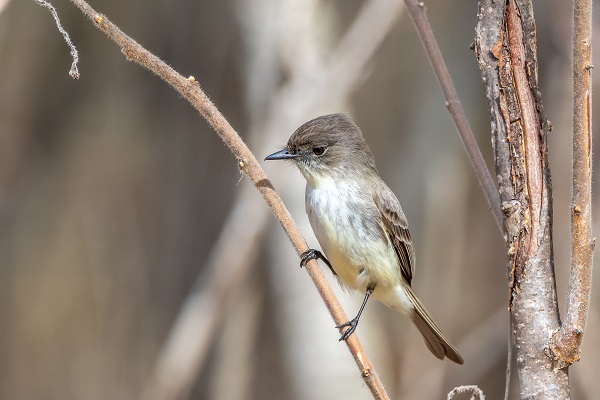
Nature’s beauty is adorned with an array of splendid creatures, and among them, the Eastern Phoebe (Sayornis phoebe) stands out as a charming songbird that captures hearts with its melodious calls and endearing appearance. This article delves into the fascinating world of the Eastern Phoebe, exploring its natural habitat, behaviors, and intriguing migration patterns.
Natural Habitat of the Eastern Phoebe
The Eastern Phoebe is a member of the tyrant flycatcher family, found primarily in North America. Its range spans from the eastern parts of the United States and Canada, extending southward through Mexico, Central America, and into South America. This versatile songbird inhabits a variety of ecosystems, from suburban areas to rural landscapes, showcasing its remarkable adaptability to diverse environments.
Woodlands and Forest Edges
The Eastern Phoebe thrives in deciduous forests, where it finds an abundance of insects and other invertebrates to feed on. It often perches on low branches or rocks, patiently waiting to pounce on its prey with lightning-quick precision.
Water Bodies
Another favored location for the Eastern Phoebe is near water bodies like ponds, streams, and rivers. Here, the bird can be observed fluttering over the water’s surface, capturing insects on the wing, or building its nest on a nearby ledge or under bridges.
Human Habitations
One remarkable aspect of the Eastern Phoebe’s adaptability is its willingness to coexist with human activities. It often nests on human-made structures such as buildings, bridges, and even porch overhangs, which offer secure and sheltered spots for its nests.
The Eastern Phoebe’s Behaviors and Characteristics
The Eastern Phoebe is characterized by its distinctive appearance and engaging behaviors, which make it a favorite among birdwatchers and nature enthusiasts alike.
Appearance
The Eastern Phoebe displays modest yet elegant plumage, with a slate-grey back, pale underparts, and a white throat. Its tail often flicks and bobs while perched, adding to its captivating charm.
Melodious Calls
The Eastern Phoebe’s song is a delightful series of two-syllable phrases, often sounding like “fee-bee” or “fee-bee-ee.” Birdwatchers can easily recognize and locate these songbirds by their sweet, repetitive calls.
Nesting and Parenting
The Eastern Phoebe constructs its nest using a mix of mud, grass, and moss, lined with feathers and other soft materials. Their nests are often attached to ledges or tucked into protected spots, providing a safe environment for their broods. Once the chicks hatch, both parents take turns feeding and caring for them until they fledge.
Intriguing Migration Patterns
Migration is a notable aspect of the Eastern Phoebe’s life cycle, and it showcases the bird’s incredible navigation and endurance.
Seasonal Movement
The Eastern Phoebe is a short-distance migratory bird. In the spring, it travels northward to its breeding grounds in the United States and Canada. As winter approaches, it embarks on its southward journey, seeking milder climates in Mexico, Central America, and some regions of South America.
Autumn Migration
During the fall, these birds can be spotted in various regions as they migrate. Birdwatchers along the Gulf Coast and southeastern regions of the United States often witness large numbers of Eastern Phoebes on their migratory routes.
Wintering Grounds
The Eastern Phoebe’s wintering range extends from southern Mexico to Panama, where it benefits from the abundant insect life and temperate climate.
Conclusion
The Eastern Phoebe is a testament to the beauty and resilience of nature’s creations. Its adaptability to various habitats, charming songs, and intriguing migration patterns makes it a true delight for birdwatchers and wildlife enthusiasts.
Related Articles & Free Email Newsletter Sign Up
How Hummingbirds Play a Vital Role in Your Yard and Garden
The Northern Flicker: A Flamboyant Woodpecker of North America




Comment here